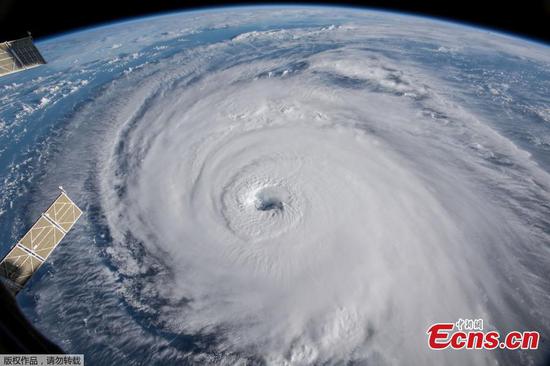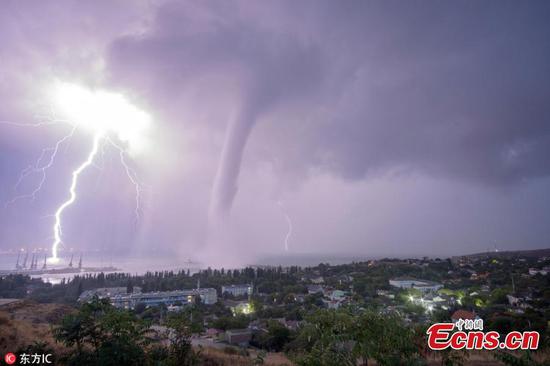
A view of Hurricane Florence is shown churning in the Atlantic Ocean in a west, north-westerly direction heading for the eastern coastline of the United States, taken by cameras outside the International Space Station, Sept. 12, 2018. (Photo/Agencies)
The U.S. Energy Information Administration (EIA) on Thursday said that Hurricane Florence is likely to affect energy infrastructure throughout the southeastern region of the United States.
The administration said that as Florence, a Category 2 storm, is expected to make landfall in the U.S. southeast coast on Friday, the massive storm will obstruct electricity transmission and distribution, while widespread evacuations and disruptions to normal business operations could impact demand patterns for transportation fuels.
As of Thursday morning, two of the 11 nuclear power plants in Georgia, North Carolina, South Carolina, or Virginia were operating at slightly reduced levels, according to EIA.
Power outages and flood-related damage to pumps caused by the hurricane will also disrupt pipeline operations, threatening petroleum supplies in this region.
Duke Energy, the major power supplier for North and South Carolina, told the New York Times on Wednesday that the storm could knock out power for up to 3 million customers across the two states. It could take several weeks to restore electricity.


















































